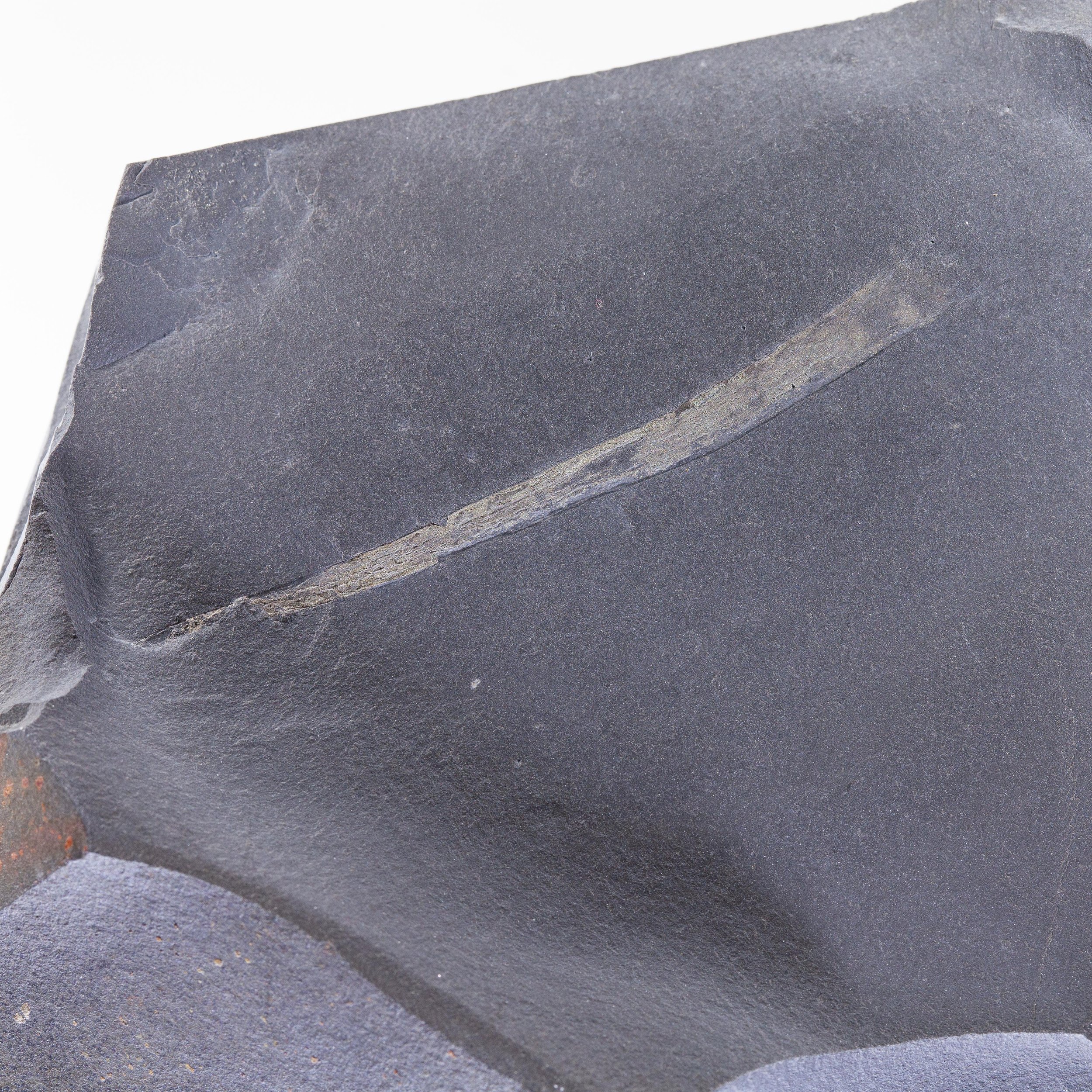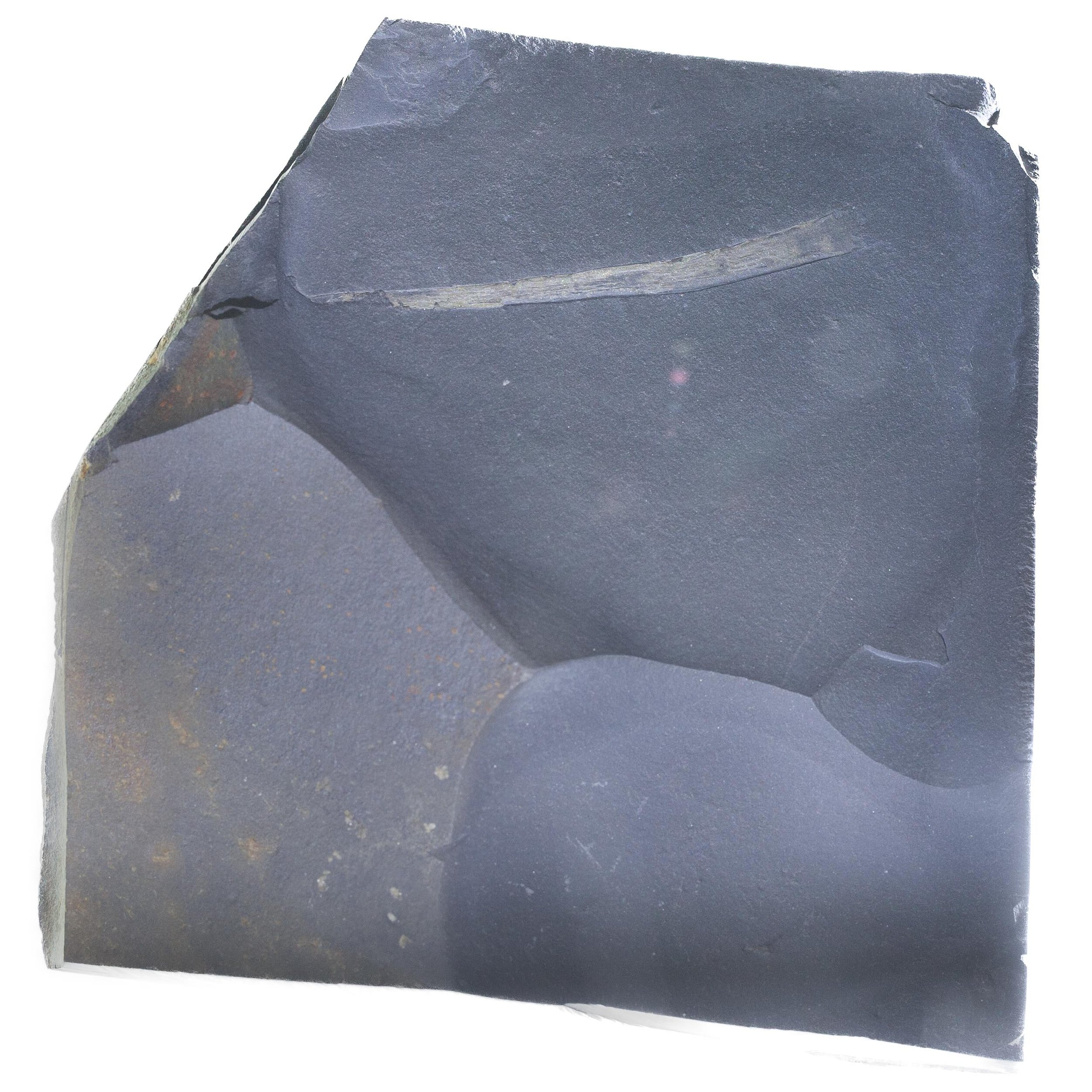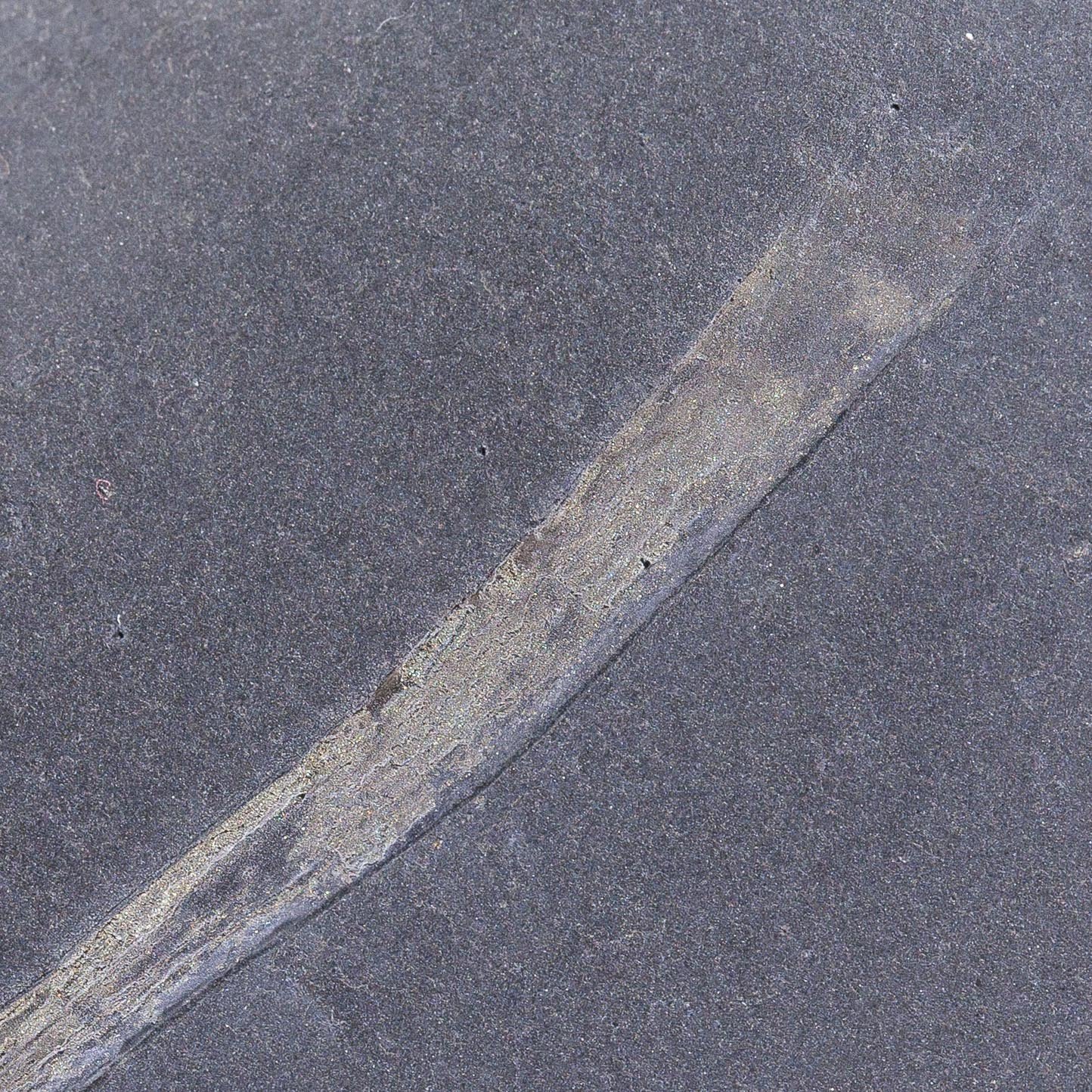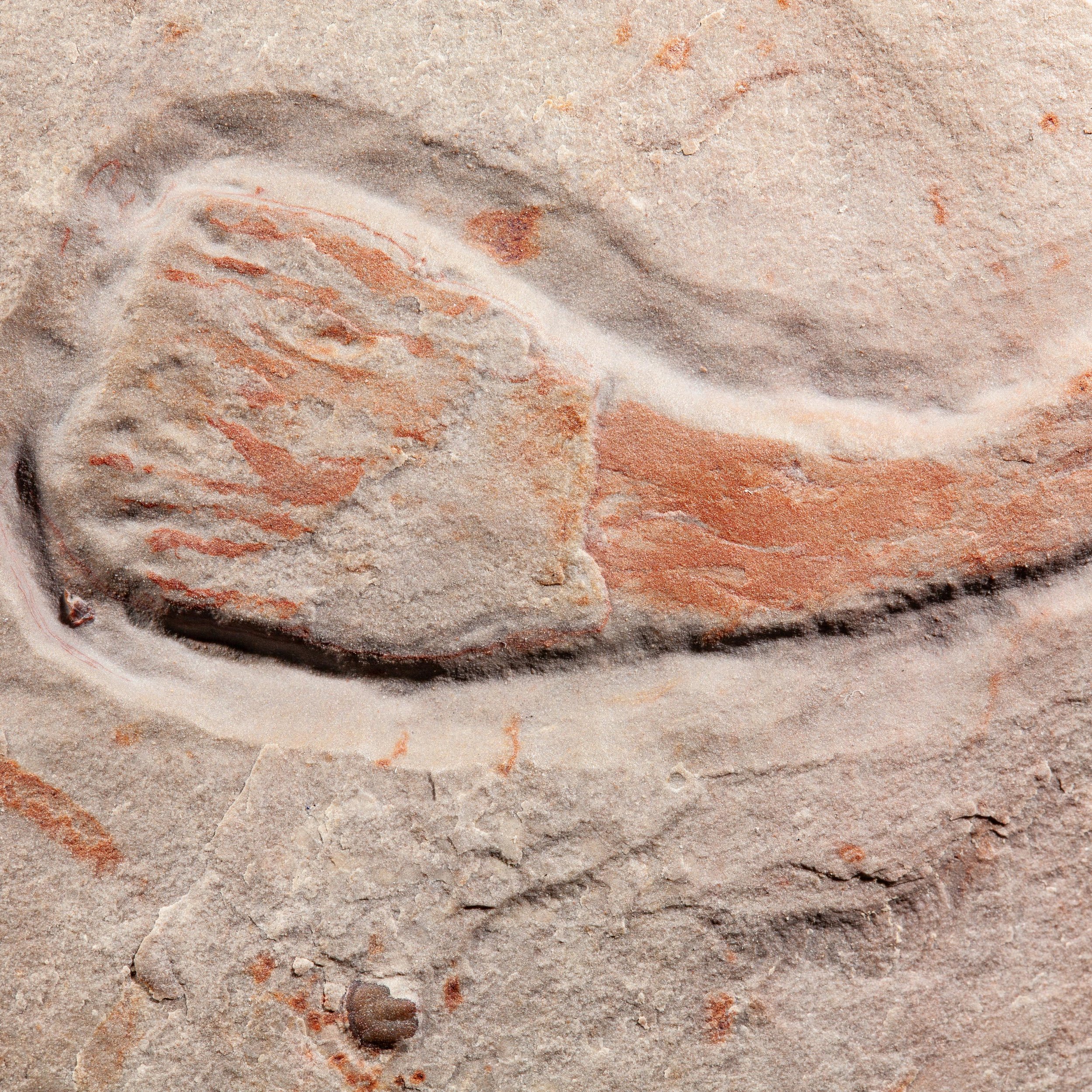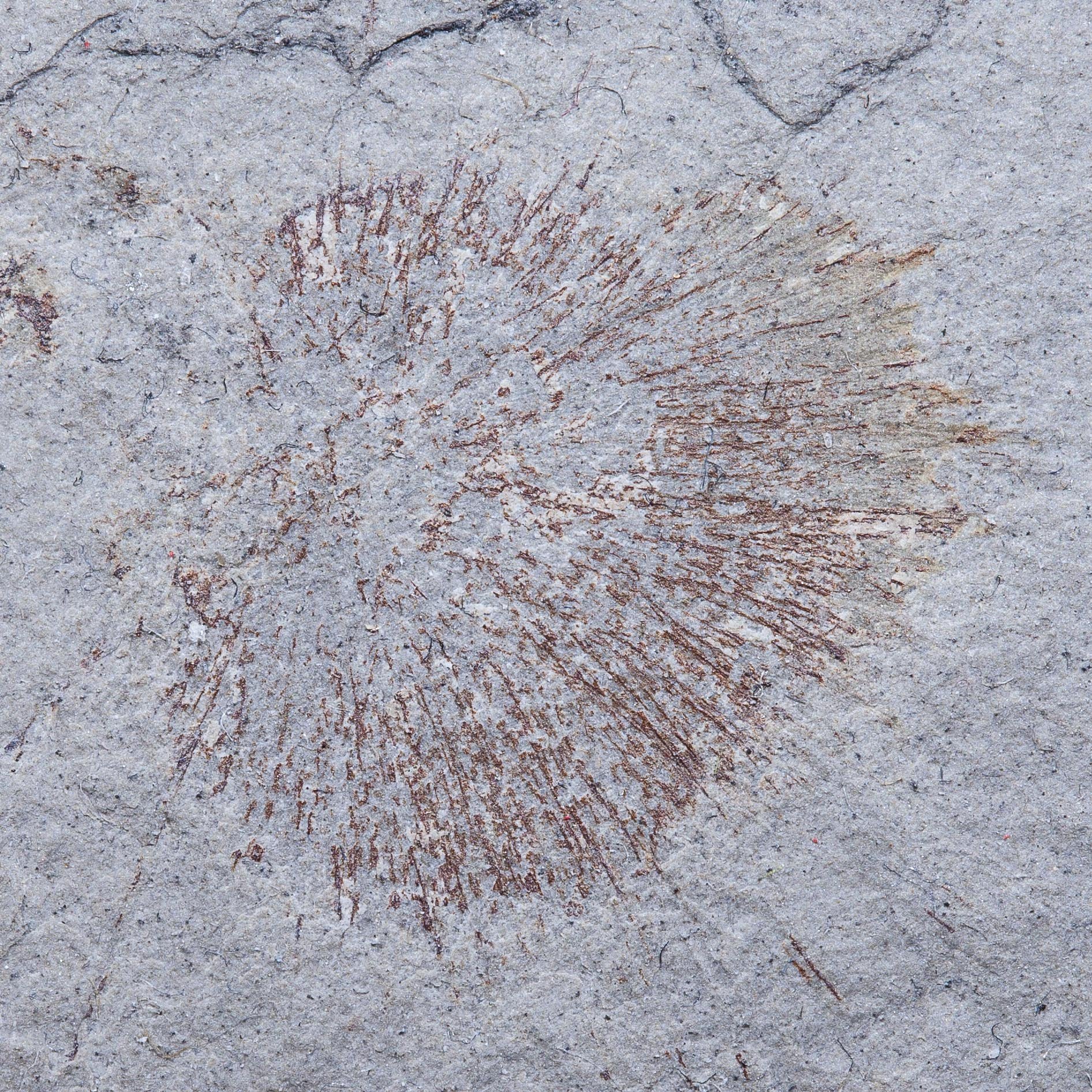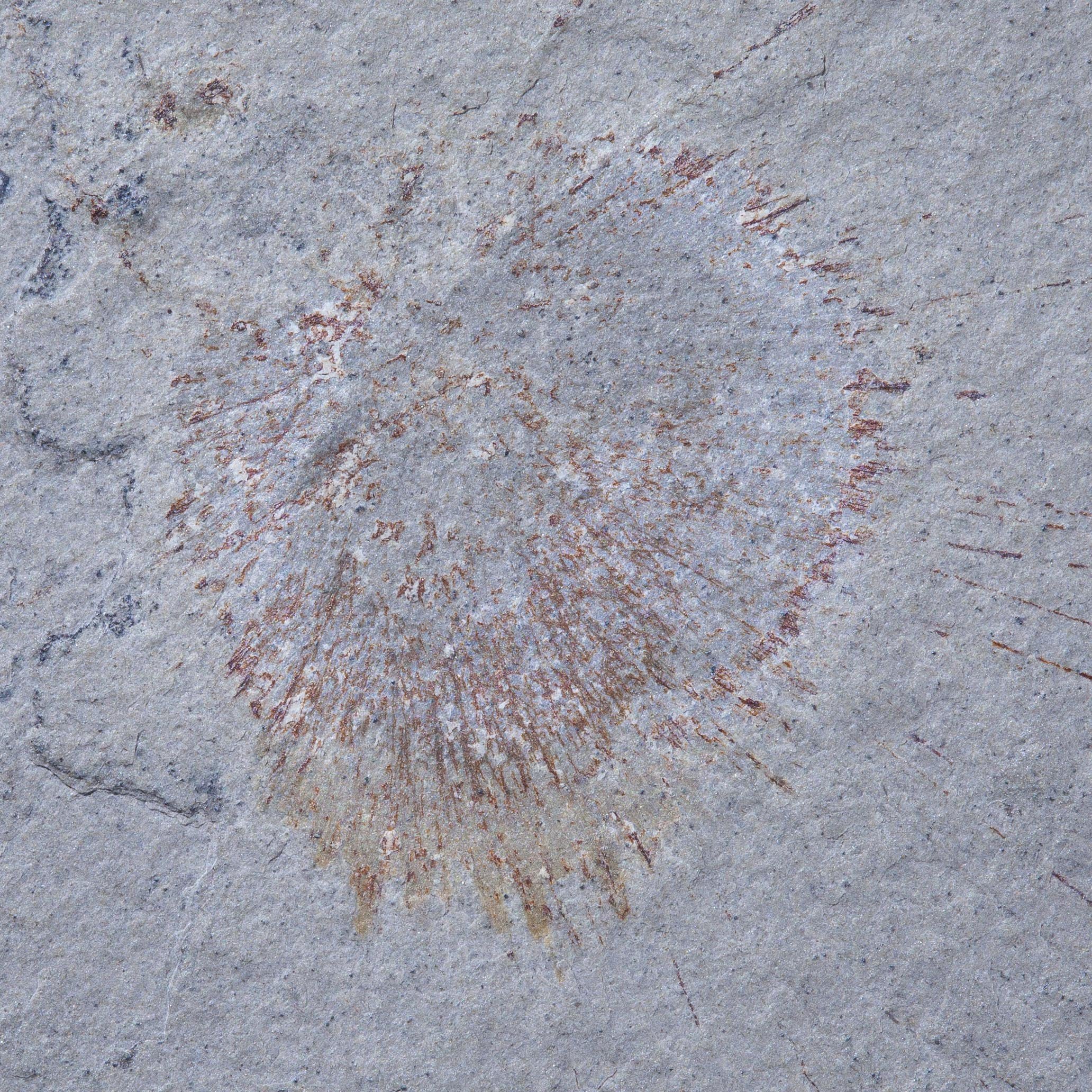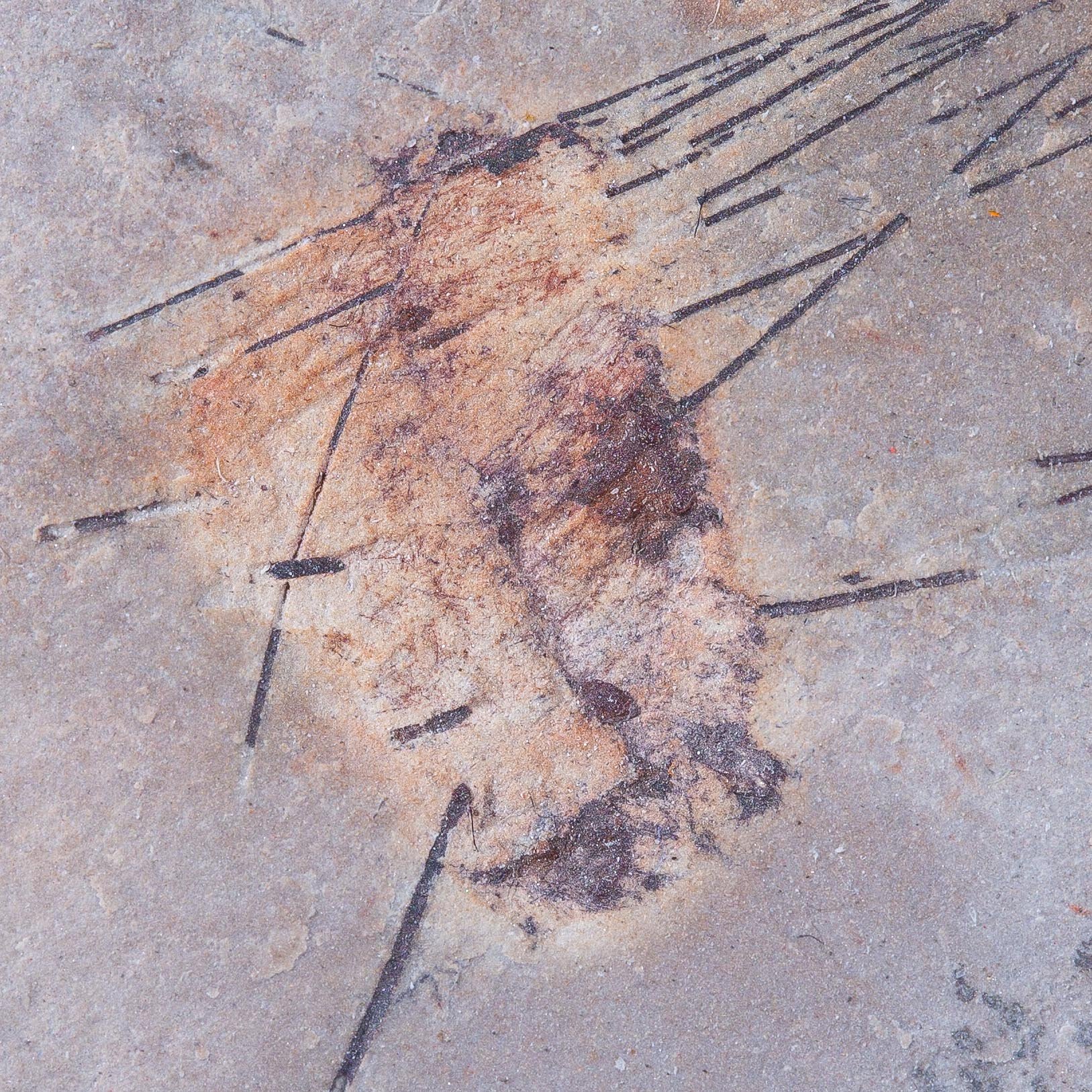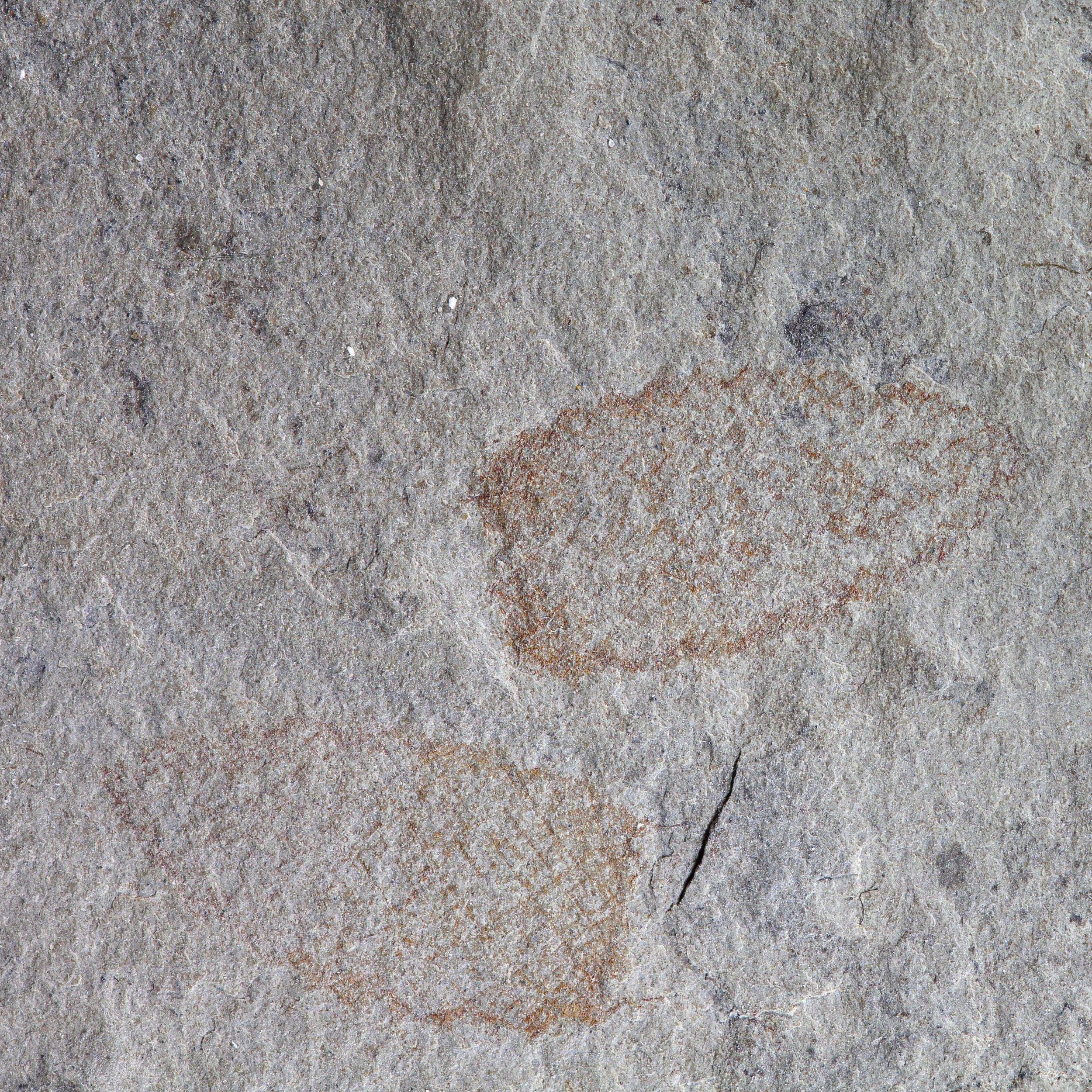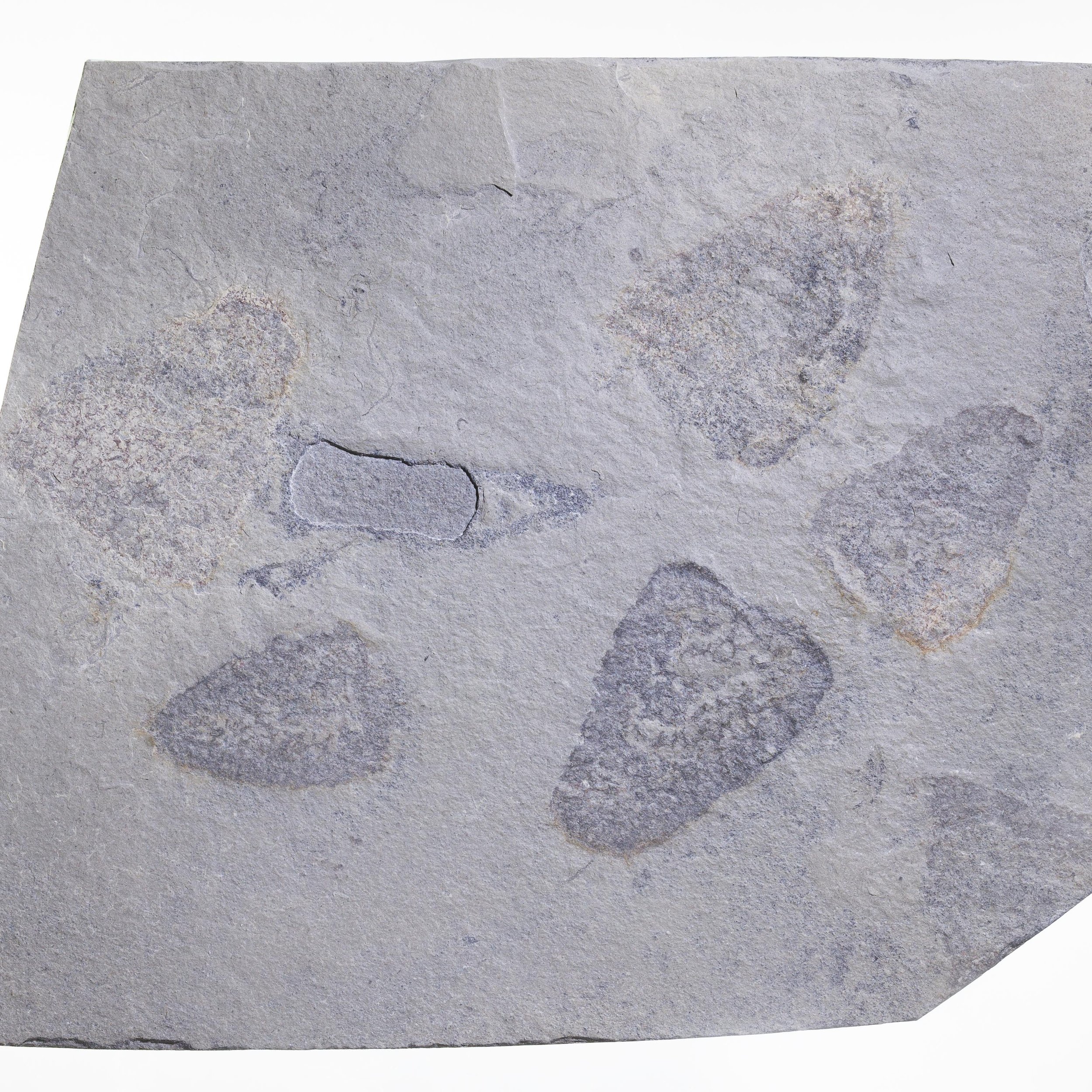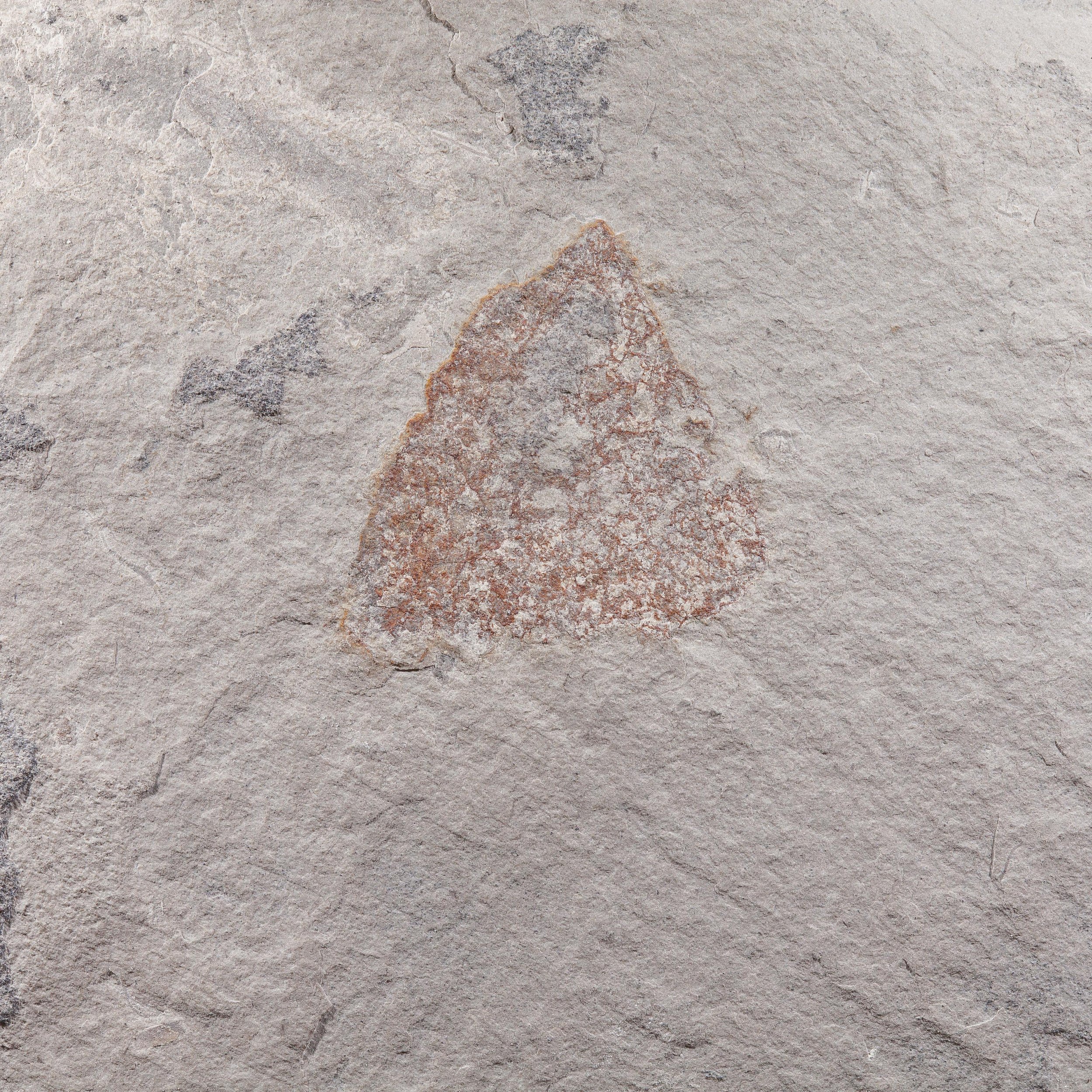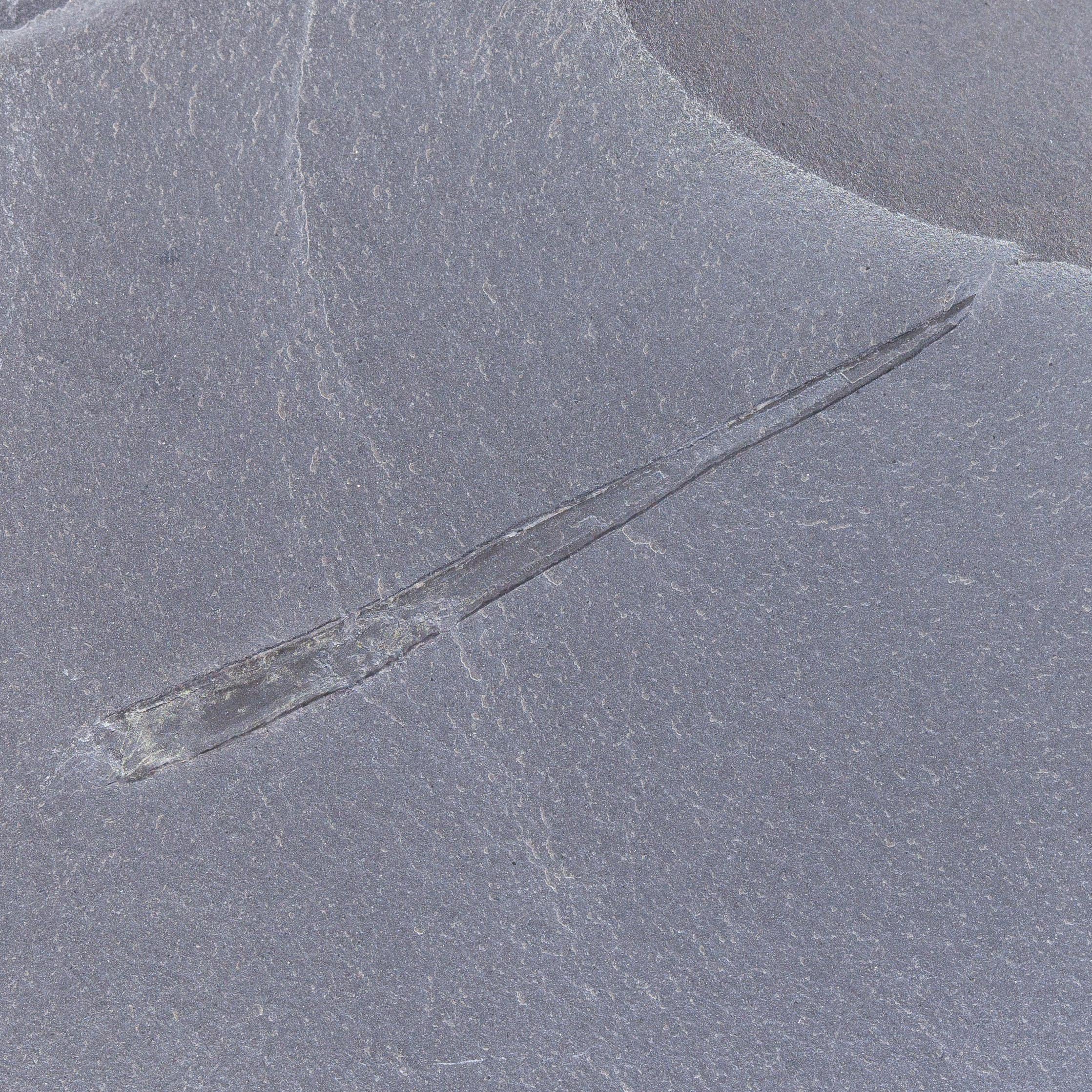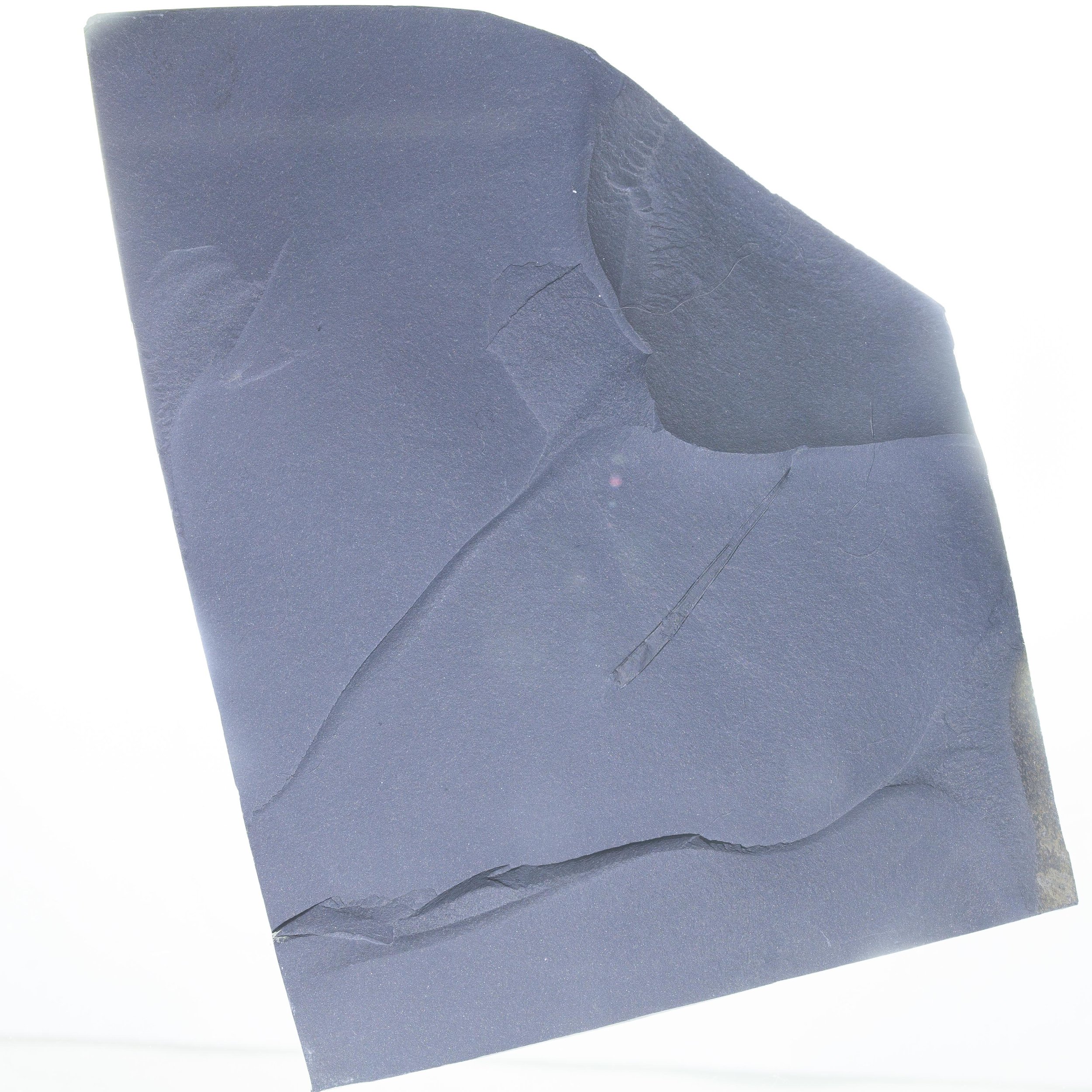Sphenothallus sp.
Vendor: Gold Bugs
SKU Number: SQ0268438
A rare Sphenothallus sp., Late Ordovician, Frankfort Shale, Lewis County, New York.
These rare, sling-shaped tubular animals were widespread in shallow marine environments during the Paleozoic. It is thought that they were opportunistic in their living environments due to the diverse nature of the sediments in-which they are found.
Sphenothallus exhibits longitudinal thickening of the test towards the aperture. Once thought to have been plants, these creatures are now considered to have a potential affinity with cnidarians, acquatic animals in fresh and marine environments that include, jellyfish, sea anemones and corals.
Full dimensions are listed below.
Vendor: Gold Bugs
SKU Number: SQ0268438
A rare Sphenothallus sp., Late Ordovician, Frankfort Shale, Lewis County, New York.
These rare, sling-shaped tubular animals were widespread in shallow marine environments during the Paleozoic. It is thought that they were opportunistic in their living environments due to the diverse nature of the sediments in-which they are found.
Sphenothallus exhibits longitudinal thickening of the test towards the aperture. Once thought to have been plants, these creatures are now considered to have a potential affinity with cnidarians, acquatic animals in fresh and marine environments that include, jellyfish, sea anemones and corals.
Full dimensions are listed below.
Vendor: Gold Bugs
SKU Number: SQ0268438
A rare Sphenothallus sp., Late Ordovician, Frankfort Shale, Lewis County, New York.
These rare, sling-shaped tubular animals were widespread in shallow marine environments during the Paleozoic. It is thought that they were opportunistic in their living environments due to the diverse nature of the sediments in-which they are found.
Sphenothallus exhibits longitudinal thickening of the test towards the aperture. Once thought to have been plants, these creatures are now considered to have a potential affinity with cnidarians, acquatic animals in fresh and marine environments that include, jellyfish, sea anemones and corals.
Full dimensions are listed below.
Additional Information
Sphenothallus Cnidarians are a very ancient phylum, with fossils having been found in rocks formed about 580 million years ago during the Ediacaran period, preceding the Cambrian Explosion. Other fossils show that corals may have been present shortly before 490 million years ago and diversified a few million years later.
References:
References Wikipedia: Sphenothallus
References Wikipedia: Cnidaria

